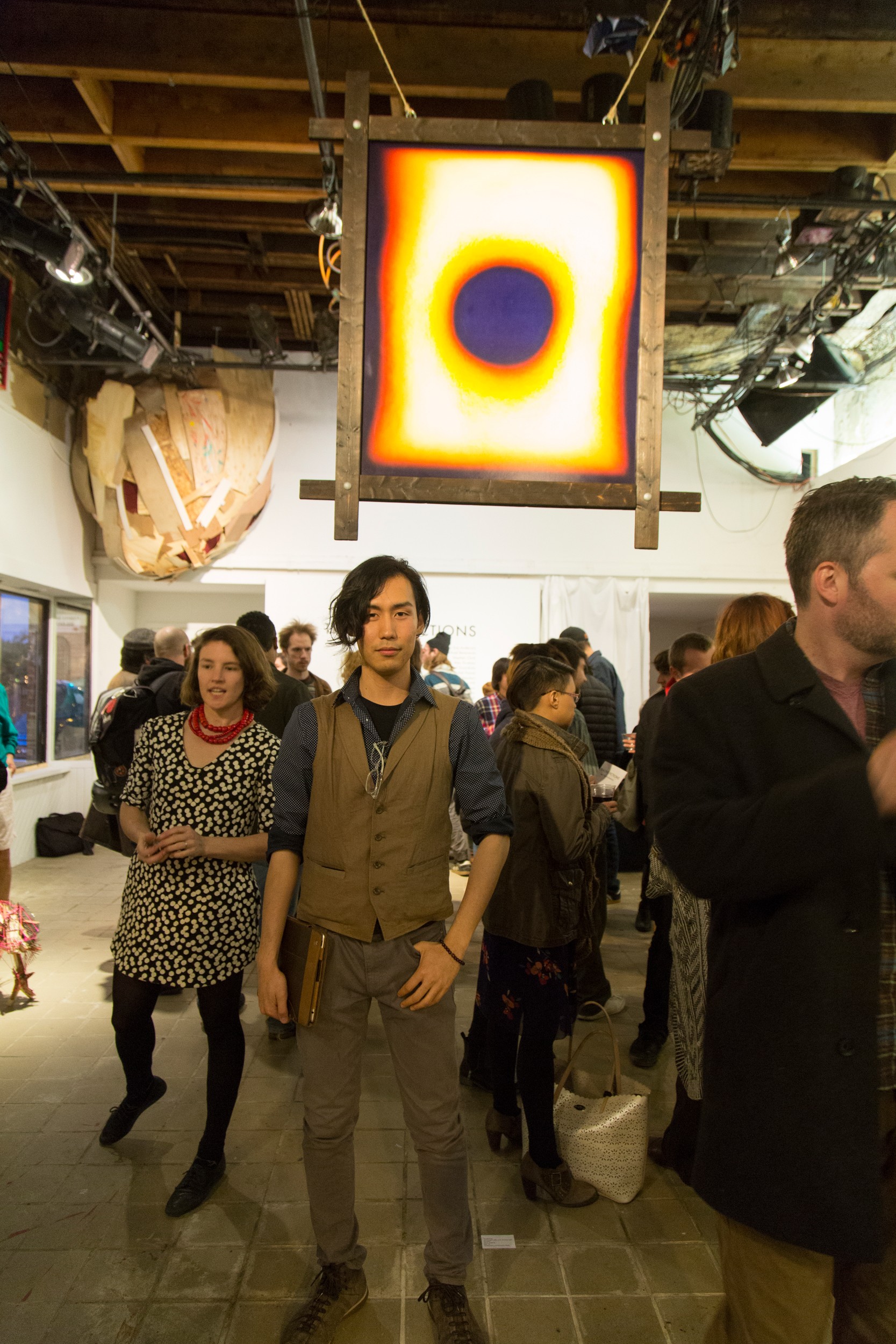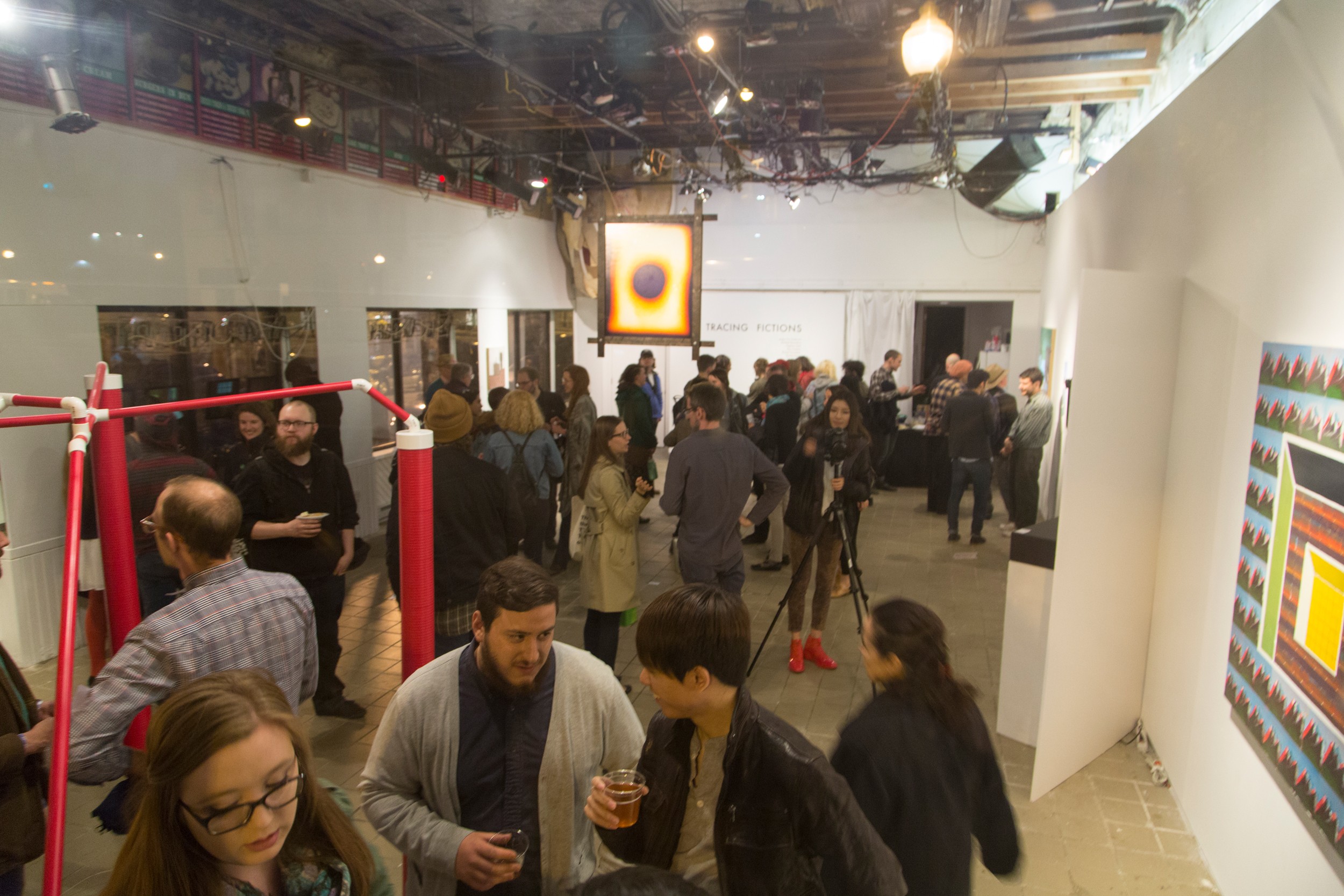
One of the most striking things about visiting the Fred Lazarus IV Studio Center for Graduate Studies is how vibrant the spaces are. There’s an energy found in the Center’s studios, classrooms, and lounges‚Ää—‚Ääand on the streets outside, in the surrounding Station North Arts and Entertainment District.
Walking through this neighborhood, past the Lazarus Center’s street-facing Riggs gallery, you hear a buoyant hum coming from the adjoining, pocket-sized café, Nancy. You see a steady stream of people crossing back and forth across North Avenue to visit Red Emma’s Bookstore and Coffeehouse, or run into Baltimore Bicycle Works, or stop for lunch at one of the area’s eclectic mix of restaurants. There’s the JHU-æ≈…´ ”∆µ Film Centre, a jewelry center, art house movie theater, an array of music venues, and fixed and pop-up galleries, and on every corner there’s a pulsating sense that things are happening here.
And though the Station North area has transformed tremendously over the past decade, that change has not meant beautification and gentrification as commonly seen elsewhere. The neighborhood is not home to big box chain stores nor has it seen architectural gems turned into high-priced condominiums. It is real and sometimes gritty, hopeful and confident, and most of all, it is a community where æ≈…´ ”∆µ’s graduate students play a vital role.
Among those are the dedicated members of æ≈…´ ”∆µ’s Grad Ex committee, a graduate student-run organization whose growth has mirrored that of the neighborhood it calls home. The committee was established formally in 2012, when a growing number of æ≈…´ ”∆µ’s graduate programs moved into the newly renovated Lazarus Center.
As Patrick Galluzzo ’14 (Photography and Electronic Media MFA), one of the organization’s first leaders, explained, “Grad Ex was founded when the Lazarus Center reopened. The committee evolved from a previous group of students who held exhibitions in the old Studio Center, as the building was known before. With the renovation came new exhibition spaces and a more formal approach to securing graduate exhibitions around the æ≈…´ ”∆µ campus.”
Initially led by Tony Ransom ’13 (Rinehart MFA), Ben Andrews ’13 (Mount Royal MFA), Greg Walker ’14 (Photographic and Electronic Media MFA), and Chris Cheng ’14 (Photographic and Electronic Media MFA) along with Galluzzo, participation in Grad Ex waxed and waned over the first two years depending on interest from first-year students and the hectic schedules of second-year MFA candidates working on their thesis shows. Still, during its first two years of existence, Grad Ex curated 20 exhibitions in gallery spaces across æ≈…´ ”∆µ and held a handful of graduate student film screenings.
Since then, participation in Grad Ex has grown and the organization has evolved. Today, it is not focused solely on traditional exhibitions but also on providing platforms for the larger community to engage through the appreciation of art and sharing of ideas. Grad Ex exhibitions have also spread beyond æ≈…´ ”∆µ’s campus into venues and spaces throughout Station North.

Heather Braxton ’16 (Photographic and Electronic Media MFA) and Andrew Keiper ’16 (Photographic and Electronic Media MFA) are among the graduate students helming Grad Ex today. The pair agrees that Grad Ex is a positive force in the graduate community.
“Other students get excited about what we’re doing‚Ää—‚Ääsolo shows, group shows, artist talks open to the community‚Ää—‚Ääwe have a group following,” Braxton said. “Grad Ex is very much run in a co-op manner. Everyone involved has authority for how the group works and decisions are made by majority vote.
“The great strength of Grad Ex is that students get the experience of putting together an exhibition,” Keiper added. “They are allowed to make mistakes and to learn from those mistakes, without the supervision of a director and pressure of formal critique‚Ää—‚Ääbut with the pressure of a public who will see the work they put together.”
Keiper, who had a solo exhibition curated through Grad Ex in fall 2015, knows firsthand how this kind of experience can impact the way an artist works. He created a political piece for the show, a choice that came with challenges not experienced in his program of study.
His work’s subject matter‚Ää—‚Ääthe death of Freddie Gray and the subsequent Baltimore Uprising‚Ää—‚Ääalso complemented Grad Ex’s ongoing work to facilitate community discourse and idea sharing through art.
Keiper, who lives in an East Baltimore neighborhood where he has observed systematic racism less apparent in other parts of the city, got involved with protests surrounding Gray’s death early on. And as he began putting together his show, called Rough Ride, he wanted to convey the intensity of the intensity of events to people who were not closely involved.
Noting that those events had a “major sonic element,” the artist put together a work using the sounds of a rough ride‚Ää—‚Ääa vehicle’s engine turning, wheels rolling along pavement, and loud, violent strikes against a hard surface‚Ää—‚Ääfolded over the noise of the unrest, including the sound of protestor chants, the incessant whir of overhead helicopters, and the voices of politicians and media commentators as they opined about events unfolding in Baltimore.
“I knew Rough Ride would be provocative, so I had to think about how I staged it,” he said. Reaction was intense, but Keiper emphasized that the experience was invaluable. “It confronted the public nature of artmaking in a way that is very different from the nature of critique with faculty and peers. Everybody knows your work, they know your motives, and hopefully they like you,” he explained. “The public doesn’t bring that knowledge to your show, and that changed the way that I work. That is one of the major benefits Grad Ex offers.”

In addition to bringing challenging ideas to the community, the committee has extended exhibitions beyond æ≈…´ ”∆µ’s galleries into venues dotting the surrounding Station North neighborhood.
Grad Ex’s first venture outside of campus, Tracing Fictions, was held last spring at the Station North Chicken Box. The group show featured the work of 15 students representing seven of æ≈…´ ”∆µ’s graduate programs.
Braxton noted, “That was one of the most exciting things I’ve been involved with in Grad Ex. We worked tirelessly on Tracing Fictions, and applied for a graduate pop-up fund. We got that funding and also found sponsorship and support within the community beyond æ≈…´ ”∆µ-by local businesses Union Brewery and Park Avenue Café. It ended up being very successful, and it was the biggest exhibition Grad Ex ever put together.”
Currently, Braxton and Keiper are working with a mix of first-year graduate students on the transition of the committee as they and the other second-year students in Grad Ex prepare to graduate.
“I came here and saw that I could help with these exhibition opportunities, and it was great to find myself working with a group of like-minded people. And now we’re building something for students yet to come,” Keiper said. “Grad Ex brought me into intimate contact with students from other programs and inspired a lot of inter-program discourse and energy.”
Braxton added, “Having everyone in the same building‚Ää—‚Ääthis graduate community in the Lazarus Center‚Ää—‚Ääwe have more interactions than we would have elsewhere. We’ve built a very strong community, and we’ve added, I think, to the neighborhood. Being able to build a network beyond your program is critical for discourse in art. It has definitely strengthened my studies have and work.”